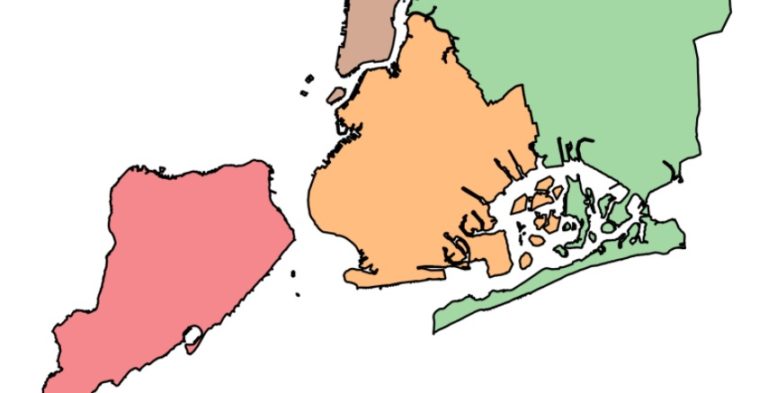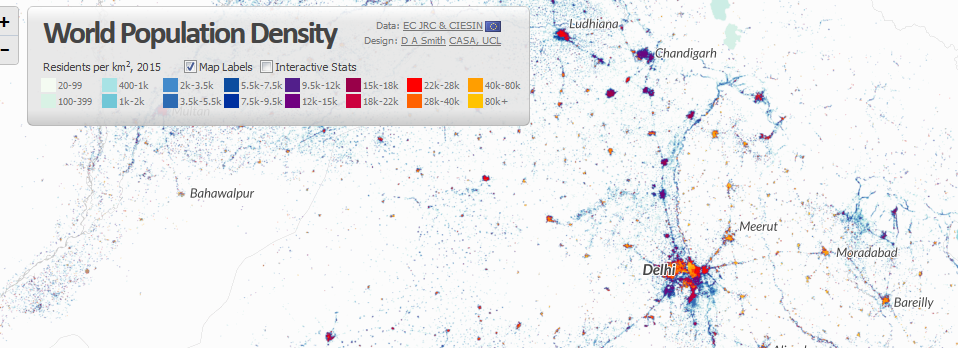
Getting Started on Geospatial Analysis with Python GeoJSON and GeoPandas

This field is referred to as geospatial analysis. Geospatial analysis applies statistical analysis to data that has geographical or geometrical components. In this tutorial, we’ll use Python to learn the basics of acquiring geospatial data, handling it, and visualizing it. More specifically, we’ll do some interactive visualizations of the United States!
https://www.twilio.com/blog/2017/08/geospatial-analysis-python-geojson-geopandas.html
HN comments:
- Using geojson.io to visualise the GeoJSON seems like the wrong tool for the job; just use folium, it works perfectly in Jupyter Notebooks: https://github.com/python-visualization/folium
- You might also be interested in GeoNotebook, a Jupyter Notebook extension for geospatial analysis https://github.com/OpenGeoscience/geonotebook
- If you are interested in GIS, make sure to check out rasterio and Fiona to go with Shapely. All great tools for GIS in python.
- For JavaScript folks, there’s Turfjs from Mapbox. http://turfjs.org/
Snaggy – easy screenshots
1. Click on the window you want to capture.
2. Press Alt + Print Screen.
3. Click back on this webpage.
4. Press Ctrl + V to upload the image.
Cameras are about to get a lot smaller
THE pill-sized cameras in today’s mobile phones may seem miraculously tiny, given that a decade ago the smallest cameras available for retail sale were the size of a pack of cards. But Ali Hajimiri of the California Institute of Technology is unimpressed. In his opinion even these phone cameras are far too thick (witness the optical bump on the back of most mobile phones), so he and his team plan to replace them with truly minuscule devices that spurn every aspect of current photographic technology. Not only do Dr Hajimiri’s cameras have no moving parts, they also lack lenses and mirrors—in other words, they have no conventional optics. That does away with the focal depth required by today’s cameras, enabling the new devices to be flat. The result, he hopes, will be the future of photography.
How to Generate FiveThirtyEight Graphs in Python – dataquest.io
If you read data science articles, you may have already stumbled upon FiveThirtyEight’s content. Naturally, you were impressed by their awesome visualizations. You wanted to make your own awesome visualizations and so asked Quora and Reddit how to do it. You received some answers, but they were rather vague. You still can’t get the graphs done yourself.
The mystery of the lost roman herb – BBC article
Julius Caesar kept a cache of it in the government treasury and the Greeks even put it on their money. It was worth its weight in gold – but no one knows if it still exists.
http://www.bbc.com/future/story/20170907-the-mystery-of-the-lost-roman-herb
Economics of Money and Banking – Coursera
About this course: The last three or four decades have seen a remarkable evolution in the institutions that comprise the modern monetary system. The financial crisis of 2007-2009 is a wakeup call that we need a similar evolution in the analytical apparatus and theories that we use to understand that system. Produced and sponsored by the Institute for New Economic Thinking, this course is an attempt to begin the process of new economic thinking by reviving and updating some forgotten traditions in monetary thought that have become newly relevant.
https://www.coursera.org/learn/money-banking
More:
For a quick video intro I recommend this video from 3Blue1Brown (“youtube mathematician”) https://www.youtube.com/watch?v=bBC-nXj3Ng4
IMHO the best intro to Bitcoin and cryptocurrencies in general.
